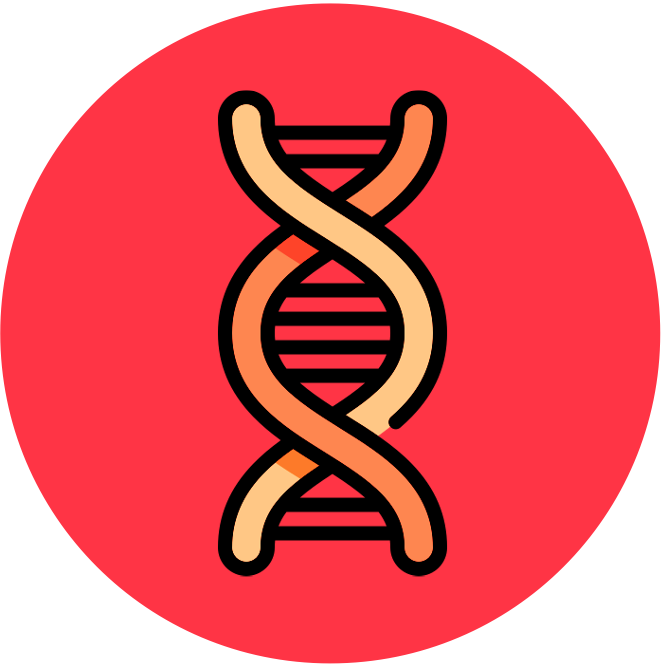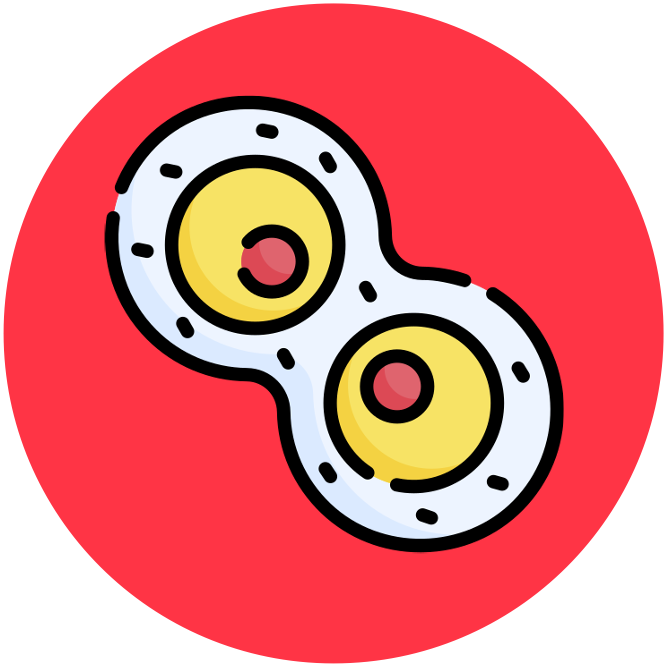

Chromosomes
A chromosome is a thread-like structure composed of a single molecule of DNA (the length of this molecule may vary)
-
Chromosomes contain the base sequences that encode the entirety of the genetic instructions of the cell
-
These instructions may be spread across multiple chromosomes – chromosome number is a characteristic feature of members of a species
Chromatids
When DNA is replicated prior to cell division, the duplicated molecule remains connected to the original at a constricted region called the centromere
-
The chromosome is now composed of two genetically identical sister chromatids (DNA replication does not double the chromosome number)
-
The two chromatids are held together by protein complexes called cohesions, which attach to the chromatids following DNA replication
-
When the chromatids become separated during nuclear division (mitosis or meiosis), they become independent chromosomes once again
Chromosome vs Chromatid
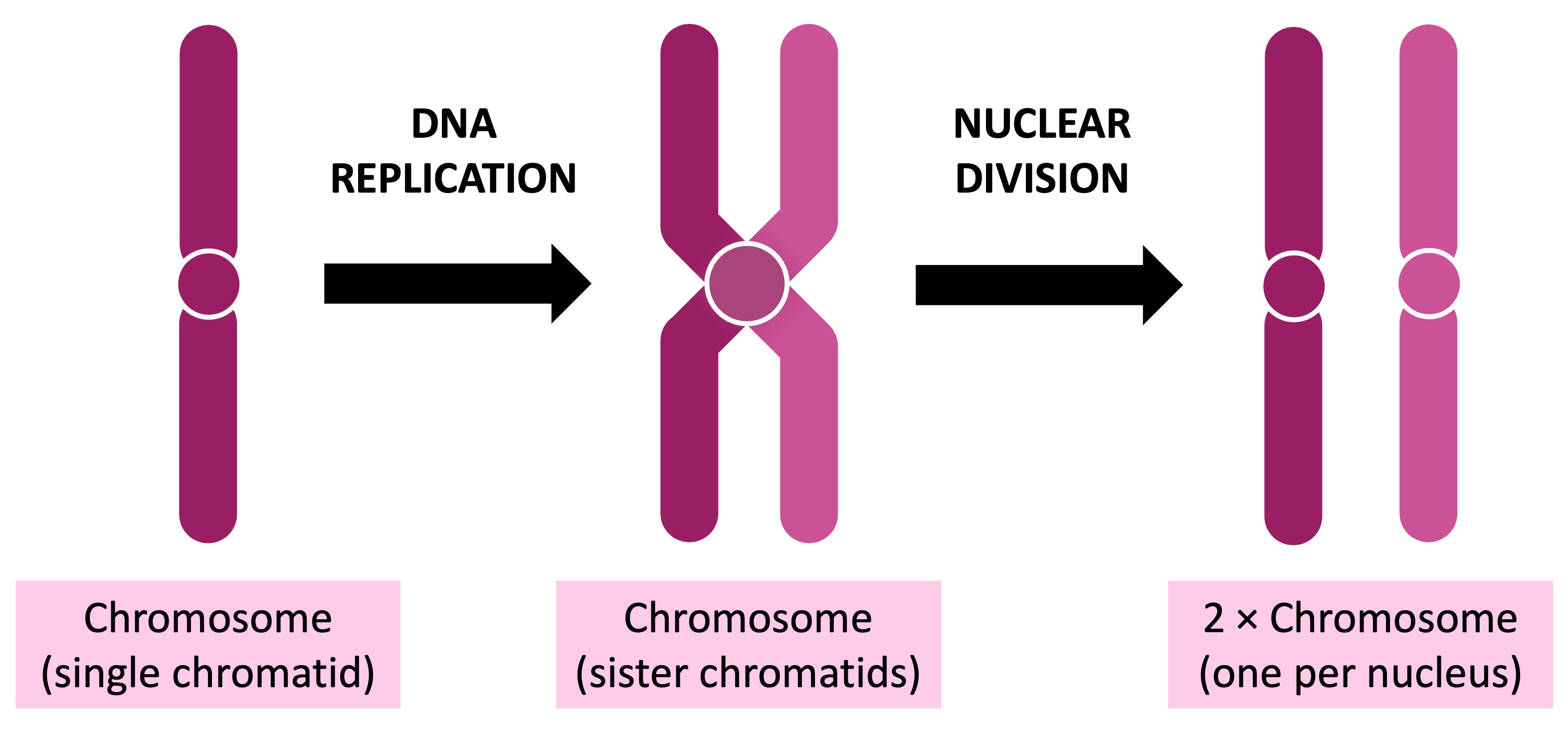

Chromatin Condensation
In eukaryotic cells, DNA is associated with histone proteins to form a compact structure known as chromatin
-
Active genes are loosely packaged as euchromatin (in order to allow transcriptional machinery to access the DNA
-
Inactive genes are more tightly packaged as inaccessible heterochromatin (for better economy of space)
When cells divide, the chromatin becomes temporarily packaged into a more tightly wound and condensed form
-
In this condensed form, the chromosome is able to be moved and segregated, allowing for the controlled separation of sister chromatids
-
The condensation of a chromosome involves the use of the histone proteins, which mediate additional twisting of the DNA (called supercoiling)
Chromosome Condensation (Supercoiling)
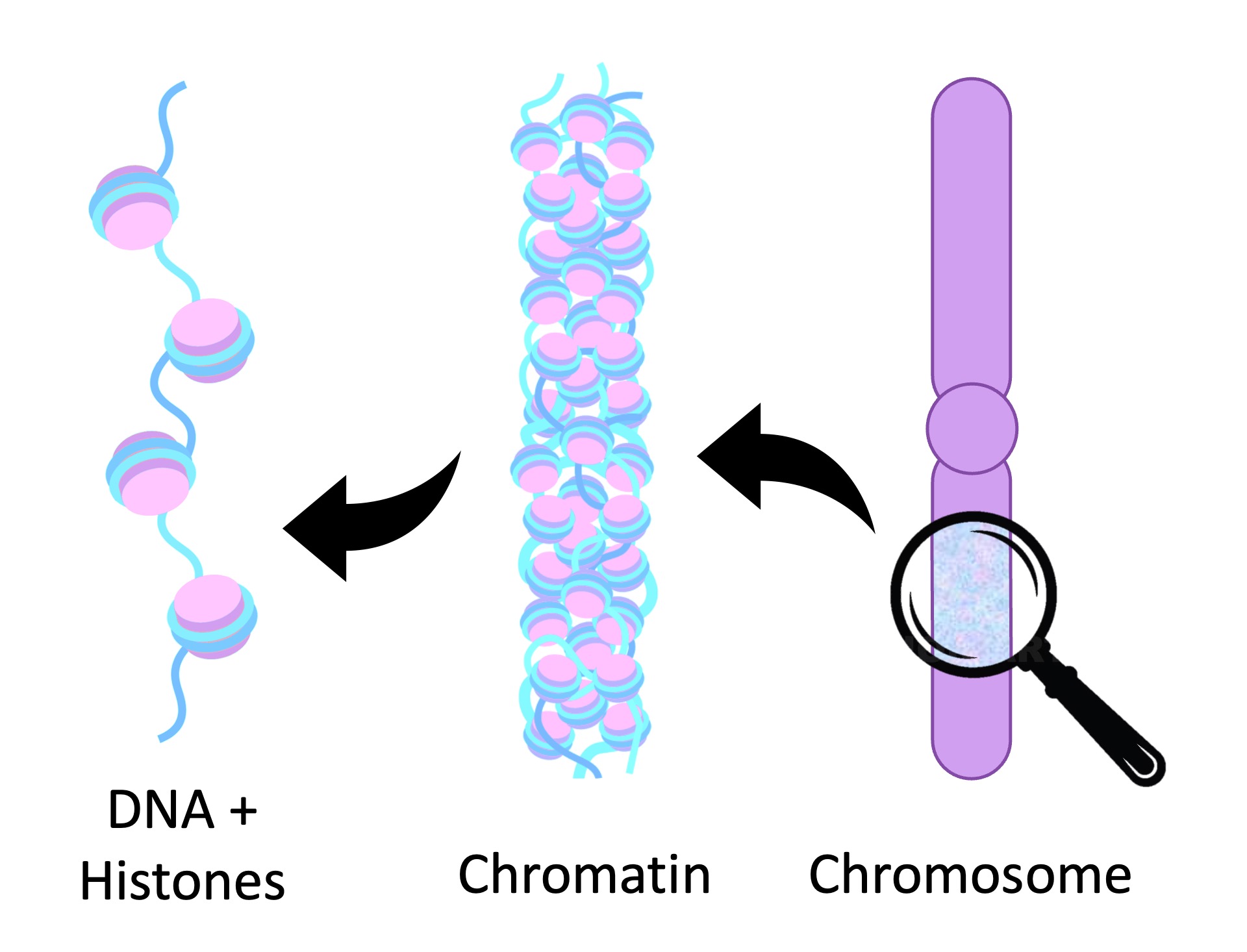

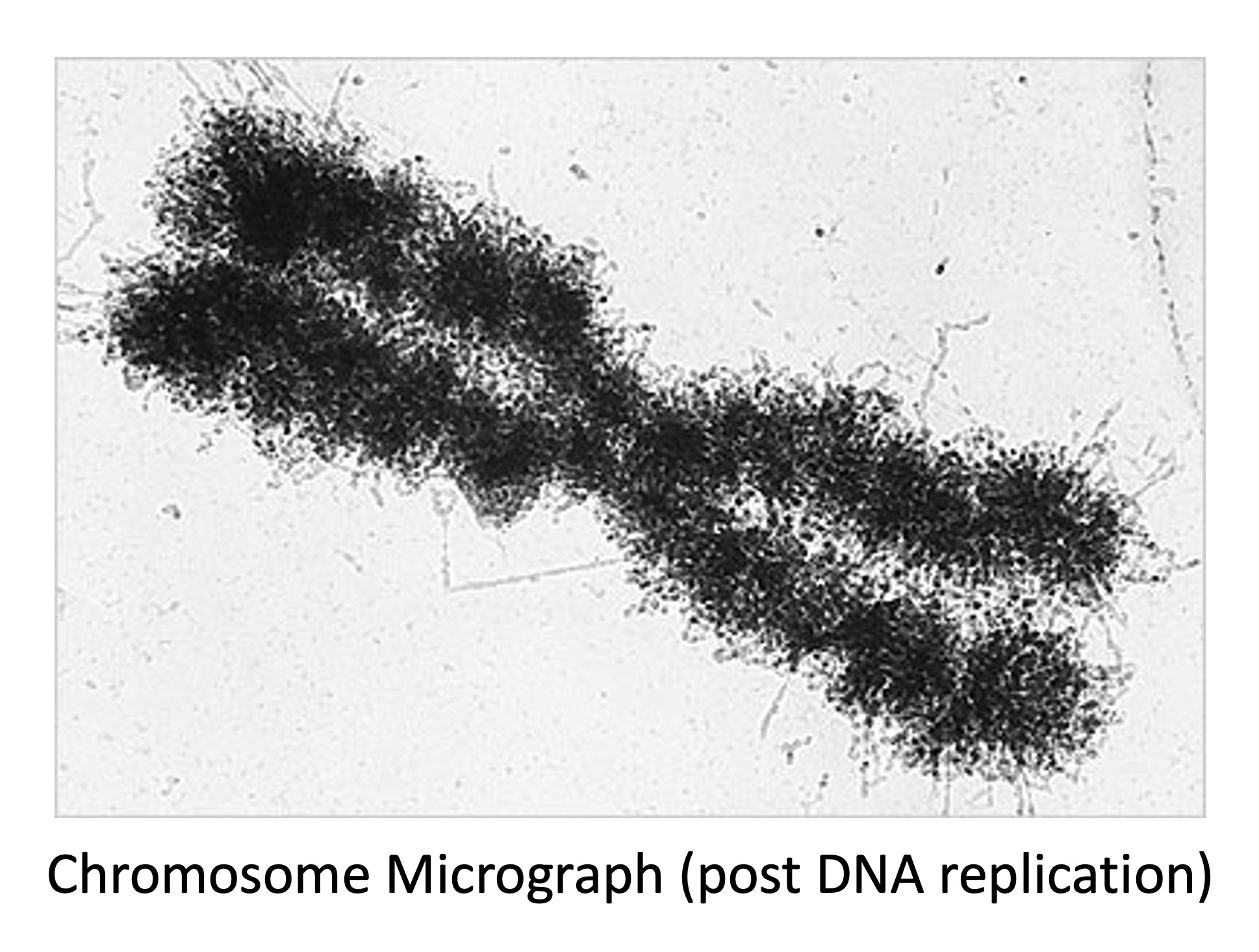
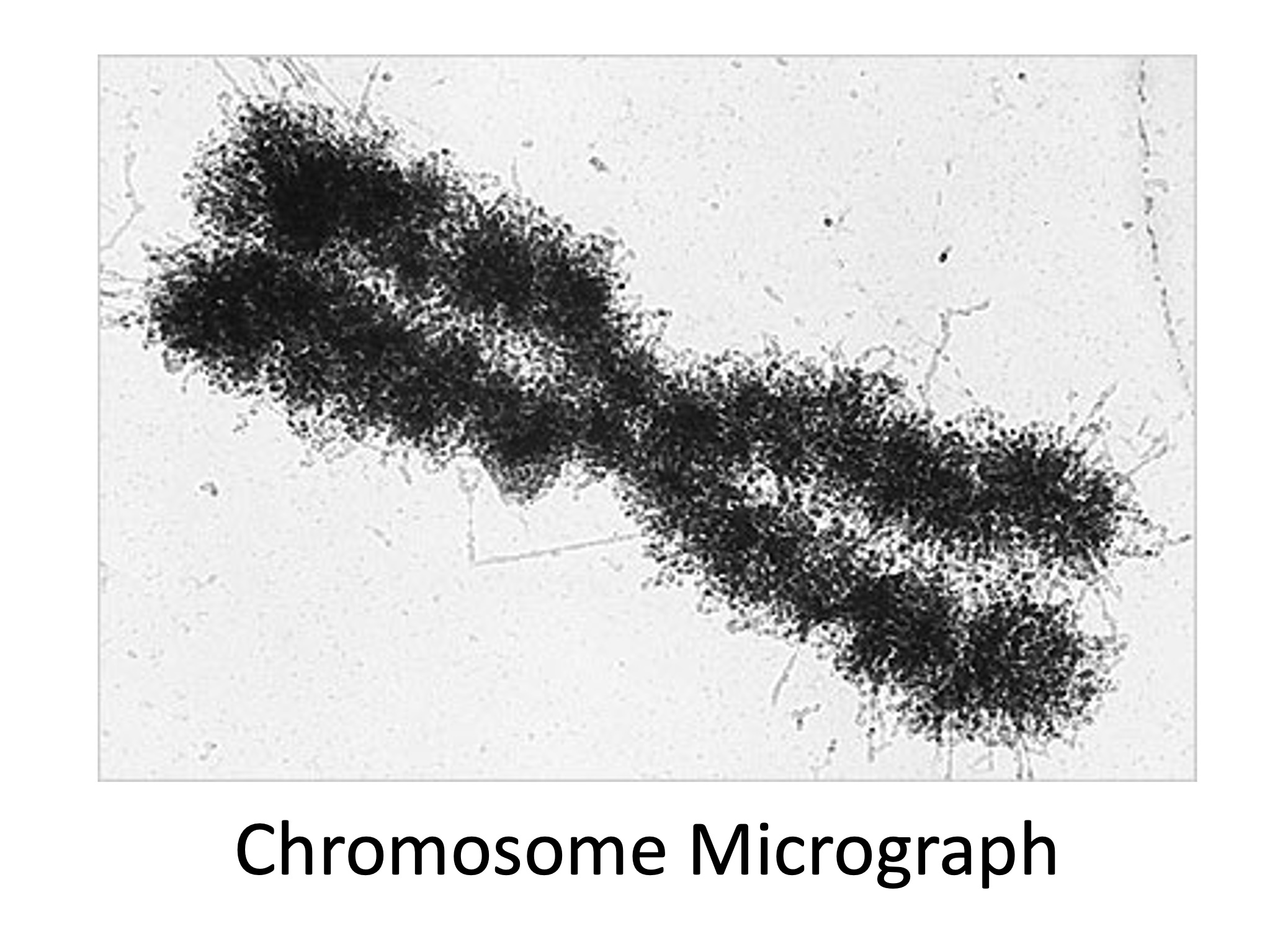
Chromosome Movement
Movement of condensed chromosomes during nuclear division is controlled by kinetochores and microtubule spindles
-
Kinetochores are protein complexes that associate with each sister chromatid at the centromere
-
The kinetochores link the chromatids to microtubule filaments that are produced by paired centrosomes
-
Depolymerisation of the microtubule filaments pull the sister chromatids away from each other to form two separate sets of chromosomes around which nuclei can reform
-
The movement of the chromosomes is coordinated by motor proteins (kinesins and dyneins), which can move along the microtubule filaments and regulate the lengthening or shortening of the spindles
-
Dyneins move away from the kinetochore region (sending signals regarding chromosome position)
-
Kinesins move towards the kinetochore region (carrying tubulin subunits to lengthen the spindle)
-



